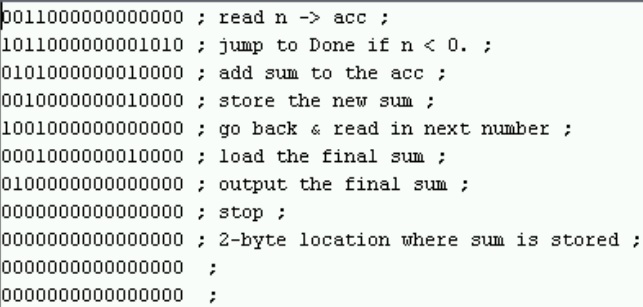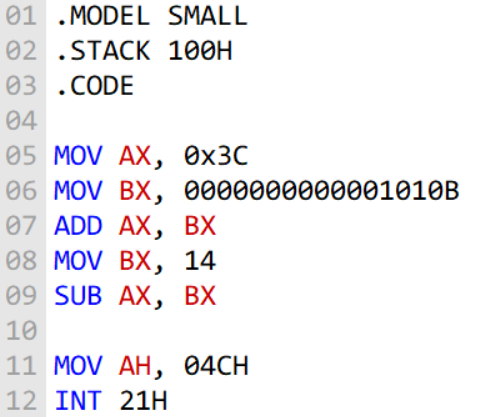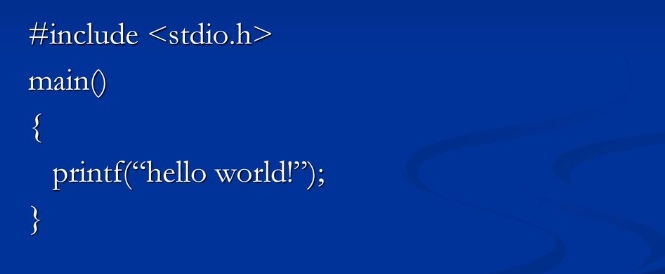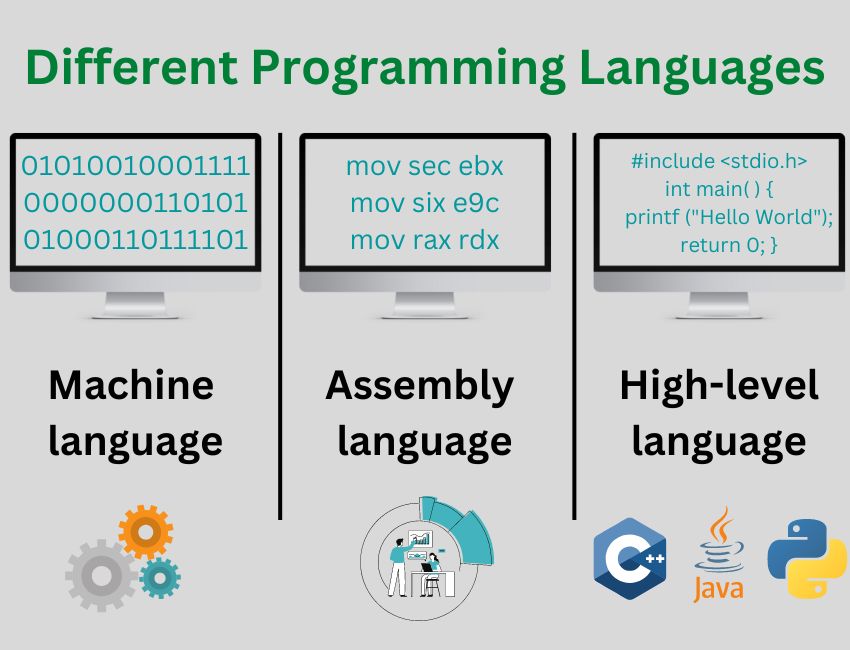Programming Language levels
It is a set of commands, instructions and other syntax use to create a software program. Programming language must be simple, easy to learn and use. It must be consistent in terms of syntax and semantics.
Programming languages are mainly categorised into three parts which are as follows
Low Level Language (LLL)
These programming languages are more difficult to understand. It is designed to operate and handle the entire instruction set of a computer system directly which are generally used to write the system software. e.g. Machine language
Machine Language: It is the only language understood by the computers. Sometimes, it referred to as machine code or object code or binary language. It is a collection of binary digits (0 or 1) or bits that the computer reads and interprets.

Medium Level Language (MLL)
Assembly Language: It is a low level programming language which is used as an interface with computer hardwares. It uses structured commands as substitutions for numbers, allowing humans to read the code easier than looking at binary codes.

High Level Language (HLL)
It is an advanced computer programming language that is not limited to one computer, designed for a specific job and is easier to understand. The main advantage of high level languages over low level languages is that they are easier to read, write and understand. e.g. BASIC, C, FORTRAN, Java, Pascal, etc.

